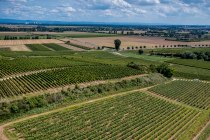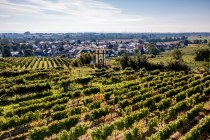Winery Karl May - Liebenauer Hof
Gault Millau 2013: "One of the most exciting newcomers in the entire Wonnegau. Karl May and his sons Peter and Fritz farm 21 hectares. It is their merit to make Osthofen more socially acceptable. Wines such as the red - and now also white - blood brother are just really good stuff: clear label, contemporary address, a content that is a lot of fun. That the May brothers dominate the art of cuvée, shows the red "Der Alte Fritz". The basic wines are a real bank, the Pinot Gris "Goldgeyer" tastes creamy and dense, the 2009 Cabernet Sauvignon has pepper, Cassis and pressure. Chapeau! "















